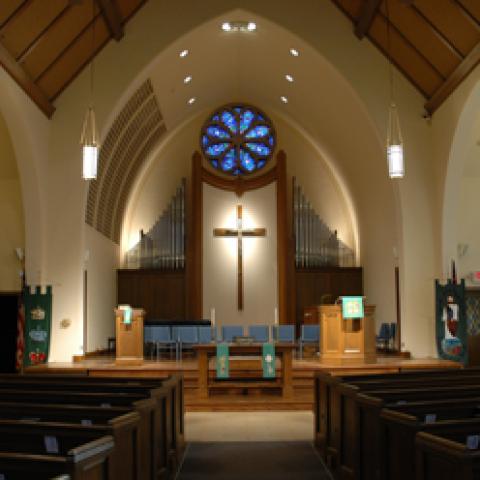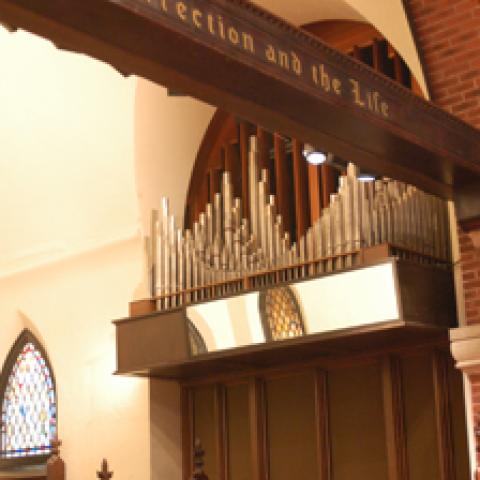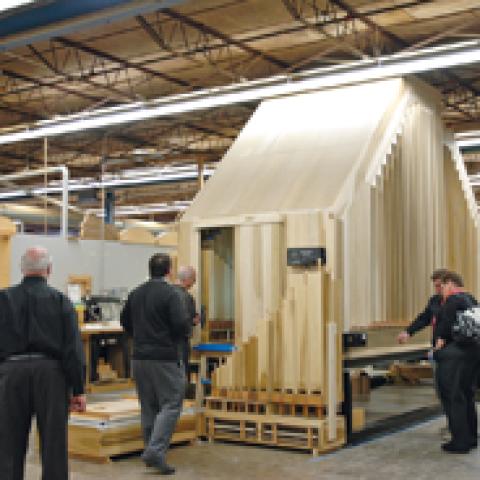
Berghaus Pipe Organ Builders, Bellwood, Illinois, has recently completed several projects.
At Trinity Lutheran Church, State Center, Iowa, Berghaus has rebuilt and enlarged the church’s 1948 Geo. Kilgen & Son organ. Completed in December 2017, the instrument now consists of 23 ranks, new slider chests, and a refurbished console. The organ will be dedicated on October 14 in morning worship and celebrated in an afternoon recital by Berghaus tonal director Jonathan Oblander.
At La Casa de Cristo Lutheran Church, Scottsdale, Arizona, Berghaus recently began installation of the prepared-for Solo division in their 2008 instrument. A vintage harp, a new set of chimes, and a custom-made Pájaritos (Nightingale) were installed in an existing chamber behind a new set of expression shades. The church continues to work toward completing the division with ten ranks of pipework.
Christ Lutheran Church, Valparaiso, Indiana celebrated the dedication of their pipe organ on June 3 when John Bernthal performed the dedicatory recital. Berghaus removed the organ, built in 1986 by W. Zimmer & Sons, from Holy Trinity Lutheran Church, St. Louis, Missouri (which was demolished), reconfigured and enlarged the instrument, and installed it in the rear of Christ Church’s sanctuary in 2018 in time for Easter. Several members of Holy Trinity were on hand to witness the start of a new life for their organ.
For more information: www.berghausorgan.com.
Christ Lutheran Church, Valparaiso, Indiana






